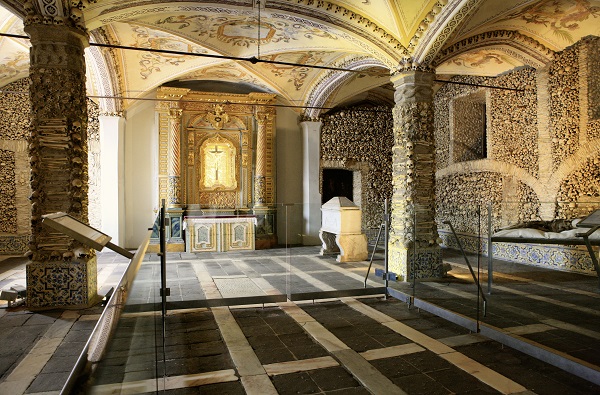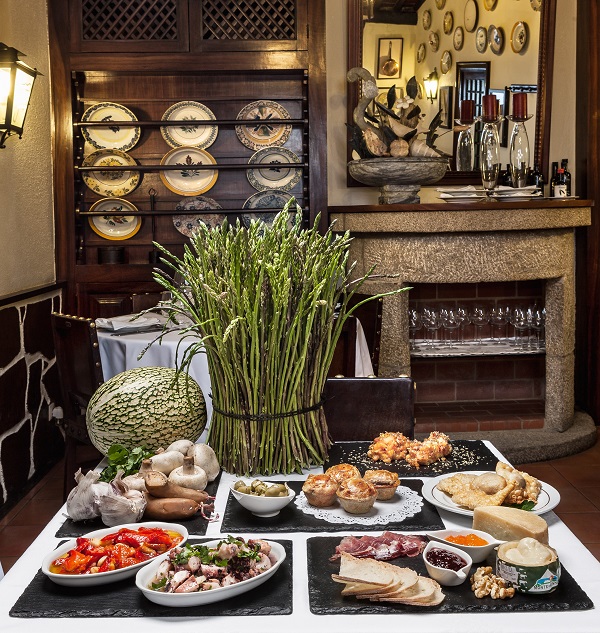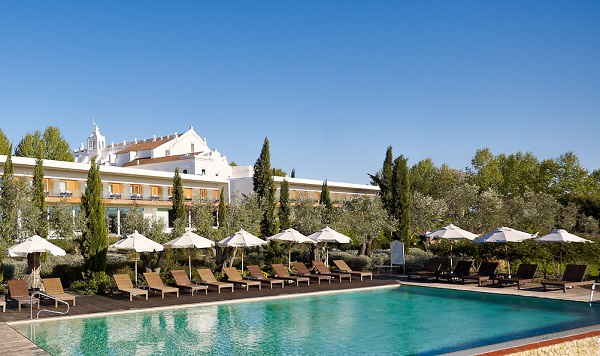Seasoned travelers understand the light. They understand that an experience of visiting the grandest of man's architectural accomplishments – the Coliseum In Rome, the Taj Mahal in Agra, Machu Picchu in Peru – is in part shaped and consistently-shifted by a structure's relationship with the light. Photographers refer to this phenomenon as "Magic Hour" in some cases and is the reason they will visit a particular monument at various times throughout the day, in order to capture that unfailing movement of light which, in turn, moves the visitor in different ways. Évora's modest but remarkable Templo Romano is one such place.
Built in the early 2nd or 3rdcentury AD, the Templo Romano sits right in the Évora’s city centre like a defiant architectural queen, as if her 14 stunningly-preserved Corinthian columns, capped with marvelous marble from nearby Estremoz, are daring you to attempt a toppling. But this imposing colonnade has survived nearly 20 centuries and it's not moving anytime soon. Seeing the various lights of the day pierce its columns from ever-changing angles will move you in mysterious ways nonetheless – and should be both the beginning and end to any perfect day in Évora.
Medieval Évora and its UNESCO-recognized centro histórico is one of Portugal's best-preserved towns, a lively university city with its feet firmly straddling both the past and future sitting on a rise just above the Alentejo plain. Neolithic monuments and Middle Age cathedrals, cloisters (and even a chilling momento mori, or reminder of death) pepper its cityscape and surrounds; while rustic wineries and tascas serving up hearty Alentejo specialties chased with easy-drinking local reds such as Borba, Évora, Redondo and Reguengos compliment the scene. A must-see (and eat!) list in Évora can be rather long so in the interest of brevity, considering this a greatest hits.
What to See


One of Évora’s most intriguing sites is also far and away its most morbid. You'll likely feel the effects of Capela dos Ossos the moment you see it, as a cramped room whose walls and columns are embedded with the bones and skulls of some 5000 dearly departed is enough to make anyone's hair stand on end. Built in the 17th century by Franciscan monks as a solution to overcrowded graveyards, the entryway's inscription only ups the eeriness ante: "We bones that are here await yours." Despite the macabre manner of it all, it's somehow a stunning scene. Foundations of Évora’s fortress-like main cathedral, Sé de Èvora, were laid around 1186, with additions of stunning 14th century towers topped by a 16th century roof, a 14th century cloister and so on throughout the years. From a revolving emerald and diamond-encrusted reliquary to Ming vases and Indo-Persian textiles, the entire complex is both an architectural marvel and an ecclesiastical treasure trove. Not to be outdone, the Manueline-Gothic Igreja de São Francisco, built in 1510, features celebratory nautical motifs chronicling Portugal's Age of Discovery heyday. The Templo Romano isn’t the only Roman game in town, either; nearby, Roman baths, known as the Termas Romano, were discovered in the entrance hall of the town hall in 1987. Today, it includes a stunningly preserved 9m-diameter circular pool.
Where to Eat & Drink


If there is one thing to eat in Évora, it's porco preto (Iberian black pork), the succulent other white meat from black-footed pigs who feed on the acorns that fall from the cork oaks that dominate the surrounding area. And there's one place to do it, the wacky-named Taberna Típica Quarta-Feira (Typical Wednesday Tavern). Cooked for hours in its own juices and served all-you-can-eat style alongside typical cheeses, petiscos (finger foods) and side dishes, this is Évora‘s non stop feast in a simple, family-run tavern. At the Moorish's quarter's Botequim de Mouraria, gourmands clamor for just nine counter seats (No tables! No reservations!), to which elaborate Alentejan dishes of the day emerge from the kitchen of Chef Domingos Canelas and his wife, Florbela. With nearly 80 years under its apron, classic Fialho skews pricier, but with its historic ambiance and award-winning kitchen, this third-generation family run tavern excels at classic like broad beans with ham and wild asparagus with eggs, roast lamb or pork tenderloin with apple puree and rabbit rice. And then there's the encharcada from Convento de Santa Clara. This classic Alentejo convent desert with eggs, cinnamon and sugar caramelized under a broiler is a mess of a happy ending to wherever you choose to dine. Enoteca Cartuxa is a sophisticated wine bar representing one of the Alentejo's best wineries (housed in a former Jesuit refectory with 16th century roots just outside town). Don't miss the signature Pêra-Manca red.
Where to Stay


Lovely across the board, Albergo do Calvario sits perfectly located on Travessa dos Lagares near Porta Lagoa and the Agua de Prata Aqueduct. It's a perfect mix of antiques and modern aesthetics combined with refined hospitality and tasteful touches. The Noble House, the oldest hotel in town, was madeover by architect Fernando Coelho, who preserved a Roman wall, exquisite tile paneling and vaulted ceilings throughout and turned this 14th century building into a fine 24-room boutique hotel. For a bit more space and resort amenities, Convento do Espinheiro is housed in an 18th century former convent on eight hectares about 5 kms outside town.
*Kevin Raub is an Italy-based travel and entertainment journalist who grew up in Atlanta and started his career in entertainment in New York, working for Men's Journal and Rolling Stone magazines.



